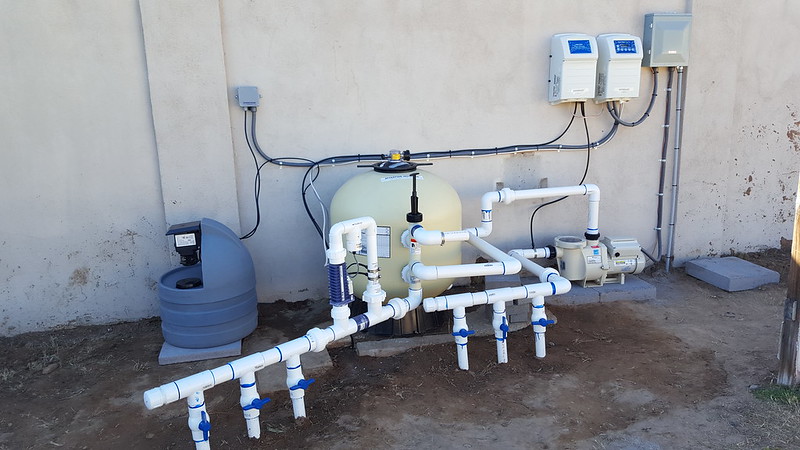Hey Everyone -
OK, so I just finished the installation and startup of our new AutoPilot SWG & Chemical Controller system. We also installed the Pentair IntelliFlo 3HP Pump. This system monitors Salt, ORP, pH, & Temp and controls the power output to a Stenner pH Acid Pump as well as an RC-52 SWG Cell (52,000 Gallon sized, my pool is 33,000 gallons).

So first, here are my current readings:
TC: .2
FC: 5.5
pH: 7.6
TA: 120
CH: 290
CYA: 40
Salt: 2900
Temp: 56F
The AutoPilot book tells me that my FC should be 1.0 - 3.0, pH should be 7.5, CYA should be between 60 to 80 and ORP should be 650. Right now, the system is telling me that my ORP is low (582), pH is slightly high (7.6) and it is running the SWG constantly to get the ORP up to 650.
What I do not understand is if my FC is 5.5, why would the system be attempting to produce more chlorine?
OK, so I just finished the installation and startup of our new AutoPilot SWG & Chemical Controller system. We also installed the Pentair IntelliFlo 3HP Pump. This system monitors Salt, ORP, pH, & Temp and controls the power output to a Stenner pH Acid Pump as well as an RC-52 SWG Cell (52,000 Gallon sized, my pool is 33,000 gallons).

So first, here are my current readings:
TC: .2
FC: 5.5
pH: 7.6
TA: 120
CH: 290
CYA: 40
Salt: 2900
Temp: 56F
The AutoPilot book tells me that my FC should be 1.0 - 3.0, pH should be 7.5, CYA should be between 60 to 80 and ORP should be 650. Right now, the system is telling me that my ORP is low (582), pH is slightly high (7.6) and it is running the SWG constantly to get the ORP up to 650.
What I do not understand is if my FC is 5.5, why would the system be attempting to produce more chlorine?

